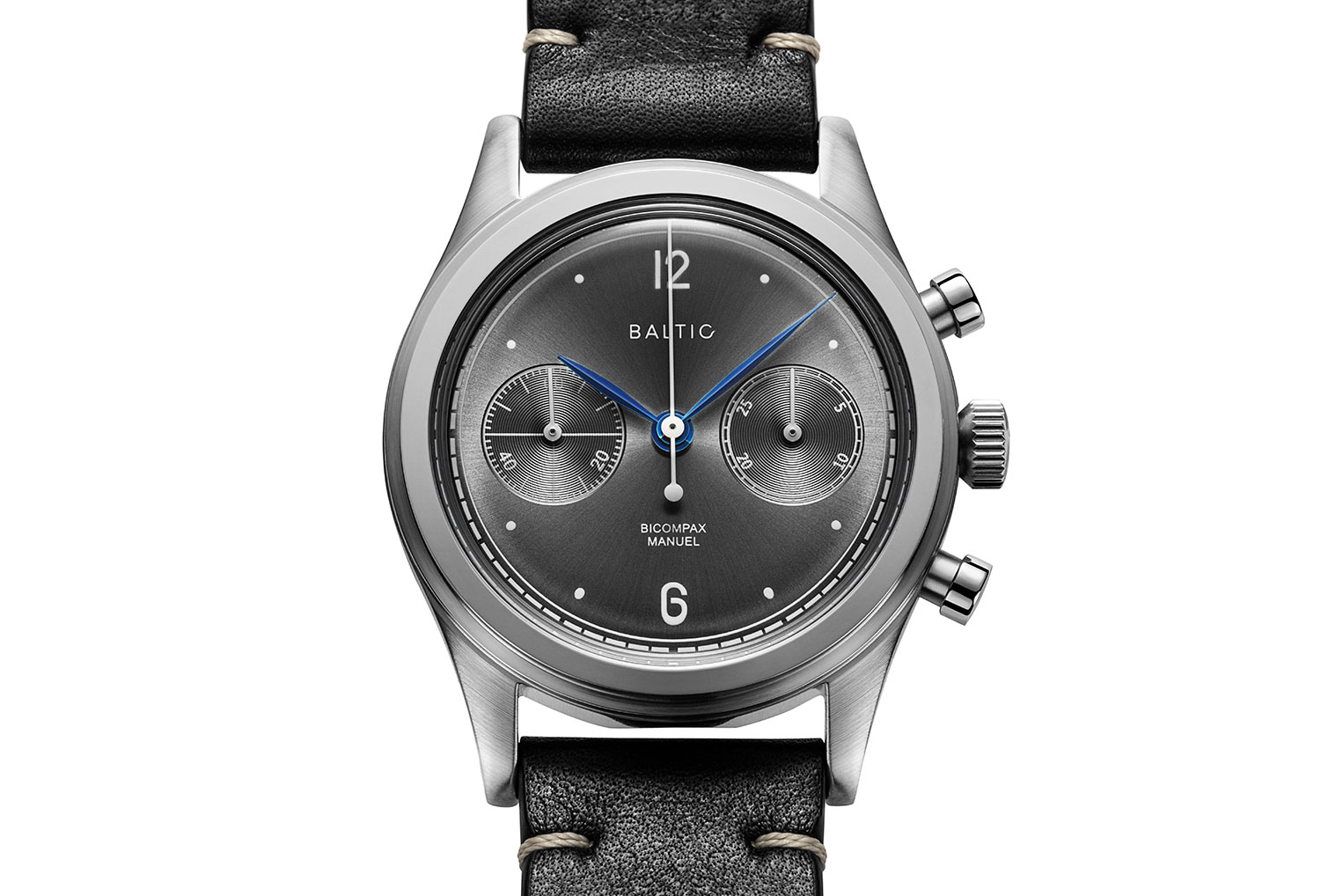Feature: Baltic Watches
There are pros and cons of owning a vintage watch. The pros, you get a piece in period style and—perhaps just as important if not more—proportions, something that modern watchmaking just seems to have no time for anymore, even the reissue pieces. The cons, you’re looking after something built at a different time with different materials and different techniques, and that can be a whole undertaking in itself. But what if you could have the best of both worlds?
If you’re like me, you’ll have probably spent a lot of time browsing watches you wish you could afford. And if you’re like me, you’ve probably wound your way into thinking about a vintage purchase, too. And in an attempt to source something that’s both vintage and affordable, you, like me, have probably also found yourself in the dark and mysterious world of the online auction.
Here, there seem to be many vintage watches at alarmingly cheap prices, brands you haven’t heard of and pictures that just aren’t quite sharp enough. But a few hundred pounds for a vintage watch—it’s almost too tempting to resist. But stop! Wait! Before you—most likely—throw your money away, there’s another solution, and it comes by way of the confusingly titled French watchmaker, Baltic.
Other than a commitment to France on matters of international security, the Baltic states have little to do with the nation or indeed its watch production, however as a name it strikes a certain sense of cold, steely eyed resilience, and it’s with this picture that we start our introduction to the watchmaker.
On the one hand, like the name, Baltic watches are very superficial: they obviously look old, but they are not. Despite the small case sizes, the domed, acrylic crystals and the simple leather straps, these two watches, the time-only HMS 001 and the chronograph Bicompax 001, are as new as new gets. They haven’t experienced decades of wear, haven’t seen a simpler time when a mechanical watch was the pinnacle of technology, didn’t live a life as a workhorse instrument.

On the other hand, however, Baltic watches do something that goes a little more than skin deep: they offer a window into the past for those who either didn’t get to experience it or for those who want to relive it, but in a way that negates the pitfalls of actually owning a vintage watch. Like a valve amp or a film camera, the experience doesn’t necessarily have to be of the period to be meaningful and enjoyable.
And at less than £500 for the Bicompax and less than £300 for the HMS, a Baltic watch starts to make a fair bit of sense. They’re simple, small and unadorned but that’s often what’s appealing about a good vintage watch. In an age of complex ceramics, chunky cases and busy displays, a Baltic watch is a breath of fresh air.
Inside, you get a Japanese Miyota 821 in the HMS and a Chinese Seagull ST1901 in the Bicompax—there was no expectation for anything more grandiose at this price point, although it is worth bearing in mind that both brands do make their own tourbillons—and that’s fine. You can even spec an optional crystal case back to peer at them through. The Seagull is actually rather pleasant to view.
It’s a simple package at a simple price, free of the pitfalls of terminal aging and backwater online deals. You don’t get any fuss or fanfare—even the boxes they come in mirror the simple designs of the last century. There’s not really much more to it than that.

But wait, there is something more, and it’s the newest addition to the Baltic collection, the Aquascaphe. If the HMS and Bicompax were the debut, this is the tricky second album. Primarily, for those early adopters of Baltic watches, a new release is a positive sign of success for the French brand, which in turn breeds confidence in the watches themselves, and it’ll be interesting to see where the story goes next.
For Baltic, it’s underwater, because the Aquascaphe, as the name suggests, is a dive watch. This is a bigger step than you might imagine, because where the first two watches enjoyed a risk-free life above the waterline, generally occupying a single atmosphere of pressure within the breezy gas we call air, the Aquascaphe has to work harder. Twenty atmospheres harder, to be exact, because it’s rated for a rather decent two hundred metres of depth.
You’ll pay a little over £600 for one, but for that you now get a sapphire crystal—good for wear and tear on a dive; a sapphire bezel with luminescent markers; the premium Miyota 9039 with increased beat, accuracy and slenderness; a quick-release bracelet; and, in this case, a deep blue sunburst dial with gilt print.
Once again, Baltic has remained true to the vintage aesthetic, sticking with its 38mm case diameter—39mm if you include the bezel—deeply domed crystal and now with the optional addition of aged markers. If you really want to go to town on the 60s diver look, there’s a finely textured matte black dial as well.

And, once again, it’s all a matter of simplicity. This, just like the other two watches, doesn’t break any boundaries or do anything innovative and unusual—they’re like comfort food, easy to enjoy. If Breguet is French haute cuisine, then Baltic is a good, rustic jambon-beurre, simple, familiar and wholesome. And when you experience one, it’s hard to imagine why anything need be more complicated.
If you’ve ever seen a really good cover band, you’ll have done so most likely because the original is either too expensive, or too dead, or you just wanted a cheap, fun night out, and so you’ll begin to understand the appeal of a Baltic watch. The original will always be the original, but that doesn’t mean you can’t still enjoy something that commemorates those golden years—especially when it costs as little as a Baltic watch does.




